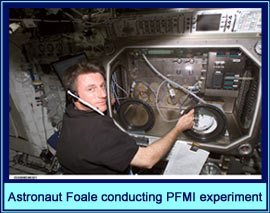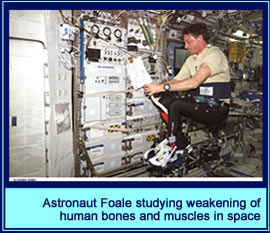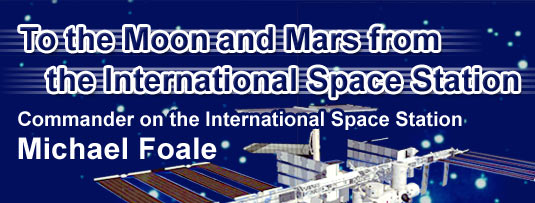 |
 |
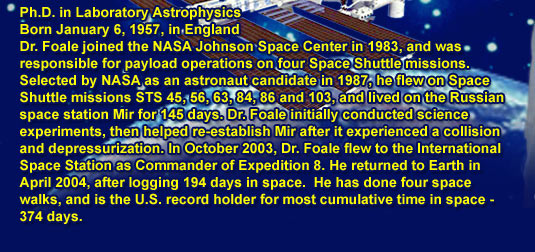 |
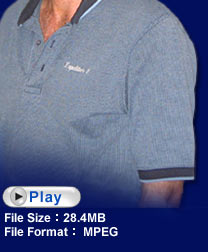 |
a Russian. We were both very experienced, and it was most important that we work well together, just the two of us, for 195 days [precisely 194 days, 18 hours and 35 minutes] without ever getting angry at each other. Another success was that we did not break anything badly. We handed over the space station in the same condition as we had received it from the previous crew: still capable of doing scientific experiments, and also of providing an opportunity for all the ISS partners in the future.
For example, Pore Formation and Mobility Investigation (PFMI) was very interesting. This was an experiment to observe the formation and interaction of bubbles that exist in materials by melting them in a Microgravity Science Glovebox (MSG). A wax-like material was melted as if it were a metal, and then allowed to slowly solidify. As crystals formed, dendritic patterns also formed, mimicking the way a metal would also cool and solidify in space. At the boundary between the liquid metal and solid metal, or the liquid wax and solid wax that we were working on, you could see bubbles and transport mechanisms taking place. Things were moving inside this fluid, and yet there was no gravity or convection causing things to move around. So, the question was, why were these things moving? With this experiment, we see how bubbles in these materials would lessen the strength and usefulness of the materials, and we study how bubble formation in metals produced on the ground can be prevented. Through this process, we are hoping to find a way of making more advanced materials. Another experiment I enjoyed was Miscible Fluids in Microgravity (MFMG), simply because it was innovative and inventive. By adding honey to water, we observed how these two materials would mix in microgravity. We used canned honey from the Russian food allocation. It doesn't fall out of the can as there is no gravity in space. So I would extract it with a syringe, and either add water to it, or inject it into another syringe that had water in it. We observed how the honey curled and tumbled into the water in a gravity-free environment. The goal is to use these observations to improve manufacturing processes for many things, from synthetic resin to pharmaceuticals.
There were many experiments on this flight that had interesting results. My measure of success, as the operator carrying out the experiment system, is that I carried out the experiments the way the investigator expected. I do not know whether he is happy or not with the results. |
|

